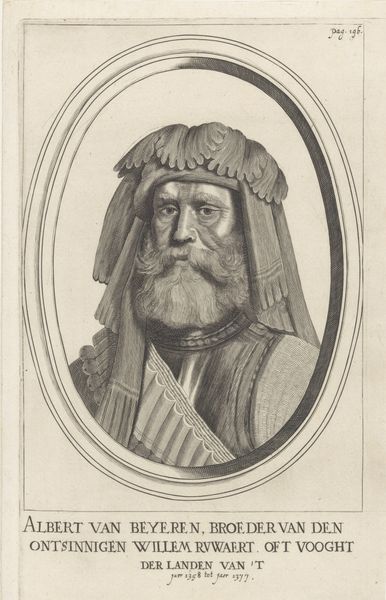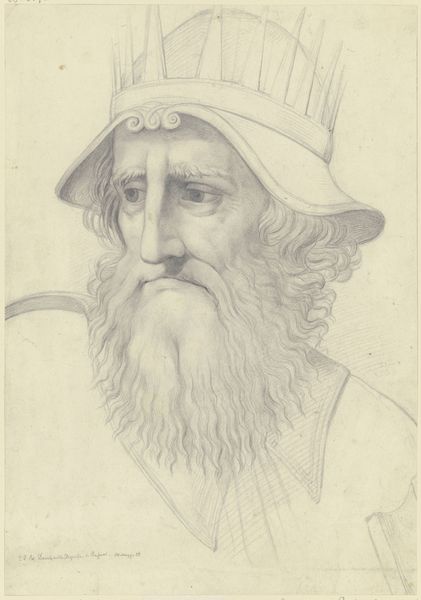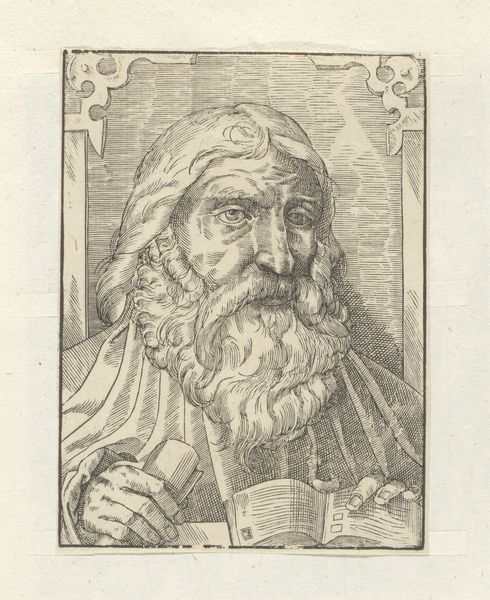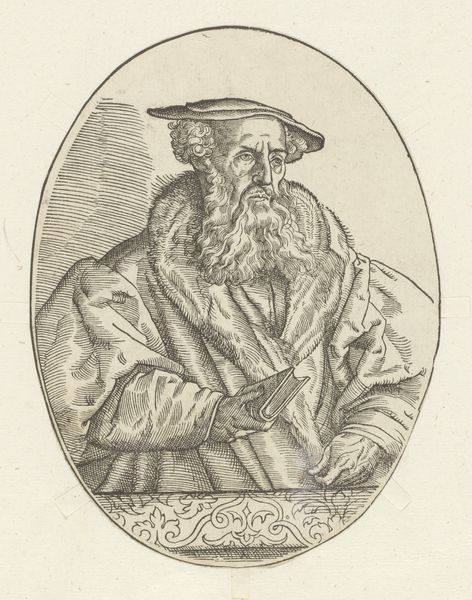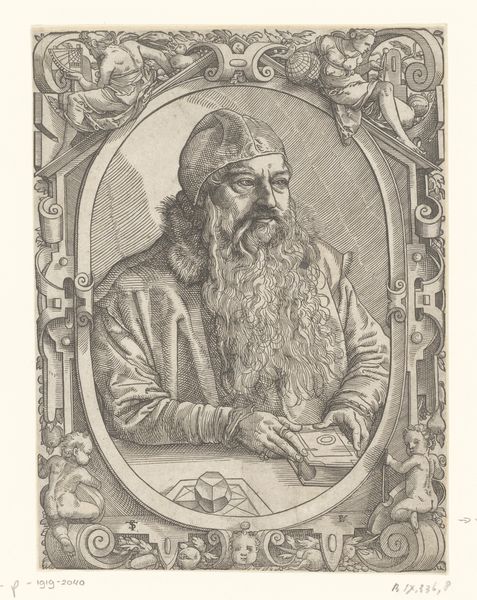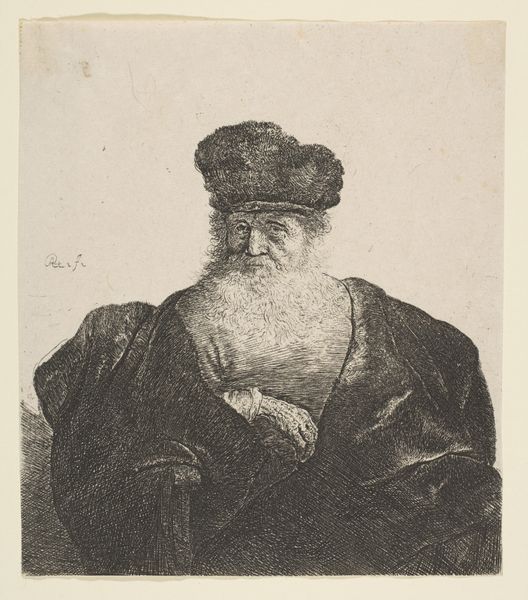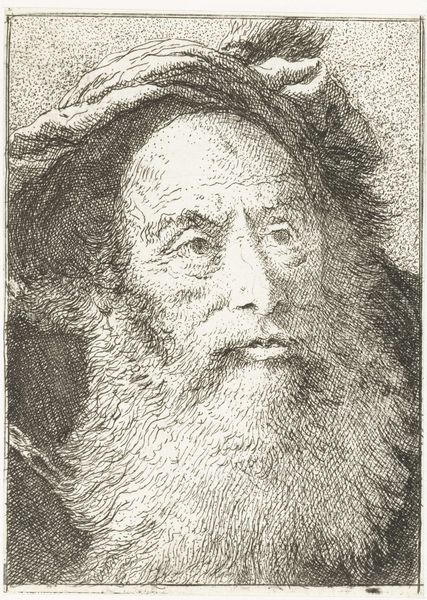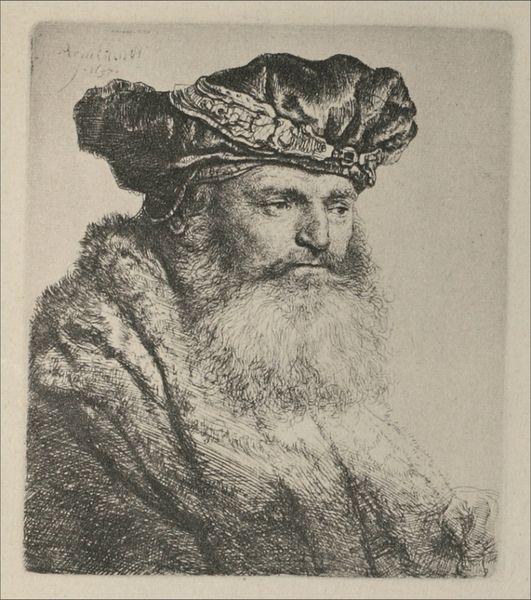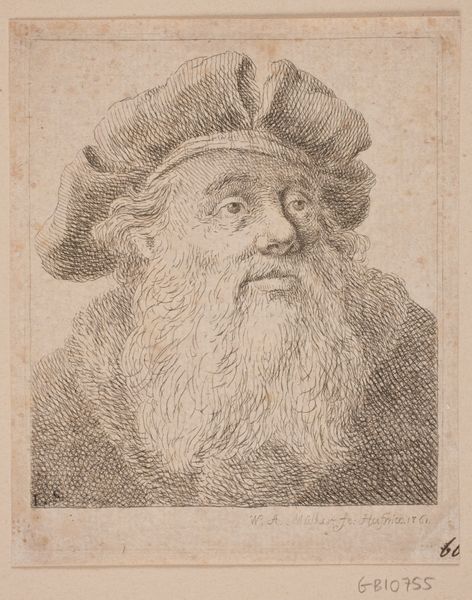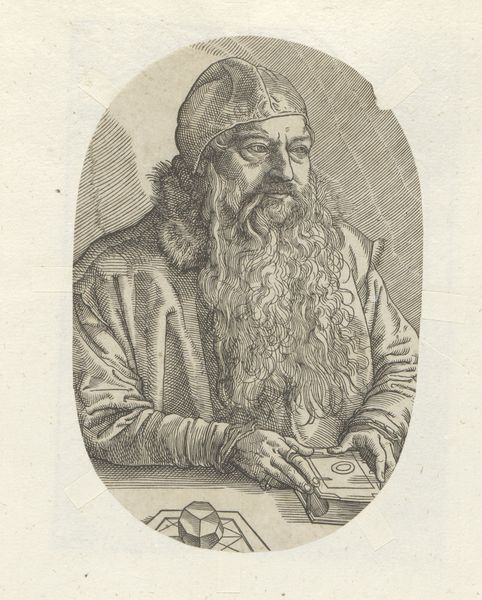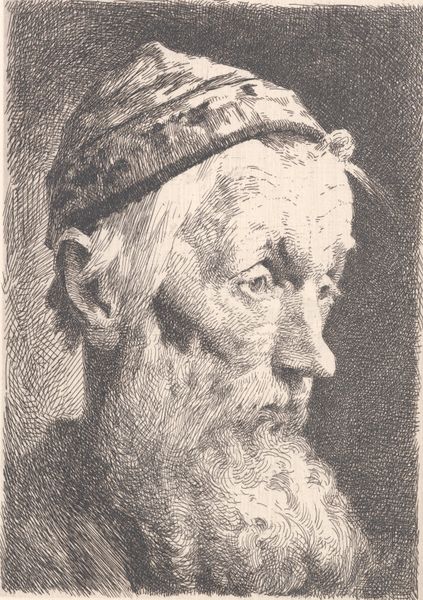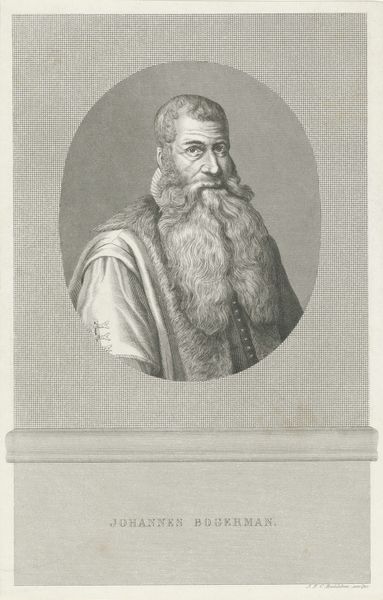
Dimensions: Height (with base): 38 in. (96.5 cm)
Copyright: Public Domain
Curator: This marble bust, titled "Bernard Palissy," was sculpted by Giuseppe Devers sometime between 1861 and 1871. You can find it here at the Metropolitan Museum of Art. What's your initial reaction to this historical figure staring back at us? Editor: I immediately get a sense of gravitas—the fur-trimmed coat, that intense gaze… there's a commanding presence carved right out of the stone. It evokes notions of power, but also of vulnerability, strangely enough. Curator: Absolutely. Palissy, a 16th-century French potter, was quite a character. He famously burned his furniture to fuel his kilns in his relentless pursuit of the perfect enamel! Editor: Obsessive, clearly! That kind of dedication, or perhaps bordering on mania, fascinates me. Do you think the sculpture captures that intensity? Curator: Devers definitely conveys that determined spirit. The slight furrow of the brow, the set of the jaw... There’s an incredible sense of realism, achieved with a nod to neoclassicism—notice the crisp lines and dignified restraint in the portrayal. Editor: Neoclassicism loved idealizing the masculine figure. But here, the beard feels almost…unruly. Is that intentional, a crack in the facade? It resists neat categorization, like Palissy himself perhaps? He was, after all, a Huguenot who challenged social norms through his scientific explorations. Curator: Precisely! And marble, though traditionally associated with pristine whiteness and ideal beauty, here gains depth and texture, echoing the roughness and imperfections inherent in both Palissy's life and his art. I love that contrast. Editor: It reminds us that historical figures were complex beings, not just simplified portraits. Devers seems to push against the smooth, polished surfaces often associated with wealth and status to remind us that even innovators grapple with human realities. Curator: Yes, the artwork celebrates a man's unwavering dedication to his craft while simultaneously questioning how our definition of success can also lead to obsessive actions. It's like asking, what cost this greatness? Editor: Exactly! So, next time we find ourselves on Fifth Avenue, it would behoove us to remember how art enables dialogue across temporal gaps that remind us of how much things stay the same, no? Curator: It would indeed. Every crease and every line etched onto the statue tells a new story with a deeper question worth knowing.
Comments
No comments
Be the first to comment and join the conversation on the ultimate creative platform.
